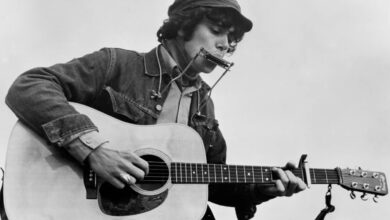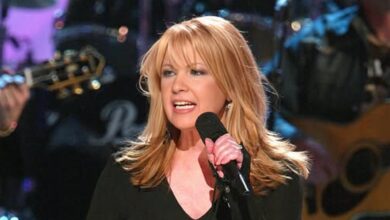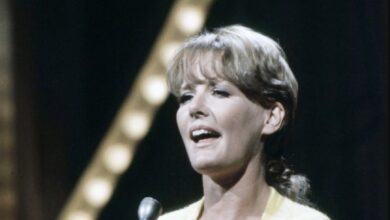The Everly Brothers’ “Cathy’s Clown” Redefines Pop and Country in 1960
In 1960, Cathy’s Clown by The Everly Brothers became a groundbreaking hit that not only topped the Billboard Hot 100 for five consecutive weeks but also cemented itself as a defining moment in rock and pop history. As the first single released under their new contract with Warner Bros. Records, the song showcased an innovative structure, heartfelt harmonies, and an emotional weight that resonated deeply with audiences. Blending elements of pop, country, and rock, Cathy’s Clown was a song that would shape the direction of popular music for years to come.
By the time Cathy’s Clown was released, Don and Phil Everly had already made a name for themselves as one of the most influential duos in music. Hailing from Kentucky, the Everly Brothers were raised on a steady diet of country, folk, and gospel, which played a significant role in shaping their sound. Their tight harmonies and smooth vocal interplay distinguished them from other acts of the era, influencing future generations of musicians, from The Beatles to Simon & Garfunkel. By 1960, they were at the peak of their careers, with hits like Bye Bye Love and Wake Up Little Susie solidifying their place in the rock and roll pantheon.
The inspiration for Cathy’s Clown reportedly came from Don Everly’s real-life heartbreak. The lyrics tell the story of a man who has been publicly humiliated and abandoned by his lover, yet still struggles with his emotions. The theme of lost love and pride was a departure from the upbeat, feel-good love songs that dominated the charts at the time. This emotional depth made Cathy’s Clown a song that listeners could relate to on a deeply personal level, adding to its widespread appeal.
The song’s production was equally innovative. Unlike many tracks of the era, Cathy’s Clown used a unique drum pattern that gave it a circular, rolling feel rather than a conventional backbeat. This rhythmic shift, combined with the Everly Brothers’ signature harmonies, created a haunting yet catchy effect. The duo recorded the song at RCA Studios in Nashville with legendary producer Wesley Rose, who helped them craft a fuller, more layered sound. The use of reverb and multi-tracking added to the song’s depth, making it stand out among other early ‘60s hits.
Upon release, Cathy’s Clown became an instant sensation. It shot to No. 1 on the Billboard Hot 100 and remained there for five weeks, becoming the Everly Brothers’ biggest hit. It also reached the top of the UK Singles Chart, where it stayed for seven weeks, making it one of the most successful transatlantic hits of its time. This level of success proved that the duo had staying power beyond the rockabilly and doo-wop trends of the 1950s, ushering in a new era of sophisticated pop music.
Cathy’s Clown was more than just a commercial triumph—it influenced the sound and structure of pop music moving forward. Its melancholic yet infectious melody inspired songwriters to experiment with more complex themes of heartbreak and longing. The Beatles, in particular, admired the Everly Brothers’ vocal harmonies, and John Lennon and Paul McCartney later admitted that they drew inspiration from Cathy’s Clown when crafting their own early hits.
For the Everly Brothers, Cathy’s Clown marked a turning point in their careers. It was their first single with Warner Bros., following their departure from Cadence Records, and its overwhelming success solidified their dominance in the early 1960s. The song’s sophisticated production also paved the way for the duo to explore richer arrangements in later releases. However, as the decade progressed, musical tastes shifted toward British Invasion acts, and the Everly Brothers struggled to maintain their chart dominance.
Despite this, Cathy’s Clown continued to influence other artists and genres. Its emotional storytelling and harmony-driven style made an impact on country music, inspiring artists like The Byrds and later, The Eagles. It was also covered by a variety of artists, including Reba McEntire, whose 1989 country rendition of the song became a hit in its own right, proving the song’s timeless appeal.
The Everly Brothers’ personal lives and careers were often tumultuous, with internal conflicts leading to a temporary split in the early 1970s. However, their impact on music remained undeniable. Cathy’s Clown continued to receive airplay on oldies radio stations, and its inclusion in various “greatest songs” lists reaffirmed its status as a classic. In 1986, Don and Phil were inducted into the Rock and Roll Hall of Fame, an honor that acknowledged their role in shaping modern pop and rock music.
The long-term legacy of Cathy’s Clown is evident in the way it bridged the gap between the rock and roll of the 1950s and the sophisticated pop arrangements of the 1960s. It was a song that broke barriers, introducing more complex emotions into mainstream music while still being irresistibly catchy. Its influence can be heard in countless harmony-driven bands that followed, from The Beach Boys to modern folk-rock duos.
In hindsight, Cathy’s Clown was more than just a No. 1 hit; it was a pivotal moment in the evolution of pop music. The Everly Brothers proved that heartbreak could be as powerful as joy in a song, and their innovative vocal arrangements set new standards for the industry. More than six decades later, the song remains an essential listen for anyone interested in the roots of modern pop and rock.
Even after the passing of both Don and Phil Everly, their legacy continues, and Cathy’s Clown remains one of their most enduring masterpieces. It’s a song that captures the pain of lost love with remarkable clarity, blending the old and new in a way that still resonates today. As long as heartbreak remains a universal experience, Cathy’s Clown will continue to echo through the annals of music history, proving that true classics never fade away.



